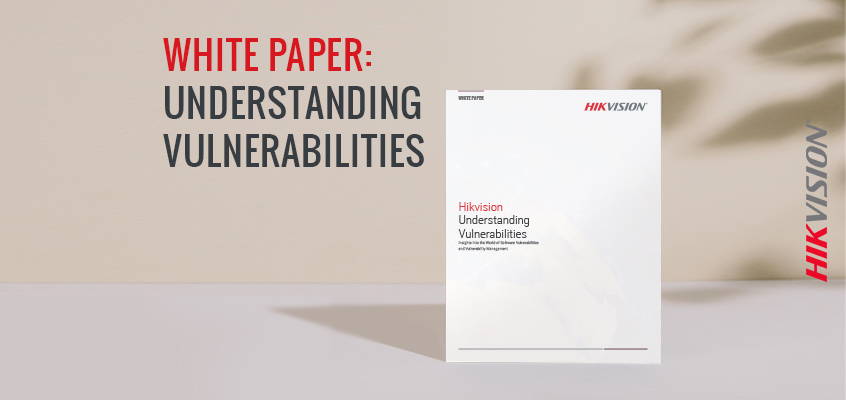Empowering Digital Defense: Hikvision's White Paper on Understanding Vulnerabilities

At Hikvision, we understand the importance of cybersecurity. Vulnerabilities are a part of today’s world. Understanding how to address them is critical. That's why we developed the white paper, "Understanding Vulnerabilities: Insights into the World of Software Vulnerabilities and Vulnerability Management."
Software vulnerabilities impact all users of technology, regardless of their background or expertise. Whether it's operating systems, applications, software components, or firmware, no aspect of our digital lives is immune to vulnerabilities. Threat actors constantly seek out and exploit these bugs, flaws, and weaknesses to gain unauthorized access to our systems.
To effectively manage vulnerabilities, it is crucial to have a clear understanding of the vulnerability management process. The Hikvision white paper delves into the various aspects of vulnerability management, guiding readers on how to:
- Search for vulnerabilities: Discovering vulnerabilities is the first step towards securing your systems. Gain insights into effective methods and tools for identifying potential vulnerabilities in your software ecosystem.
- Get patches: Software companies regularly release patches to address identified vulnerabilities. Learn how to stay up to date with the latest patches and ensure timely installation across your devices.
- Prioritize your patching: Not all vulnerabilities are created equal. The white paper provides valuable insights into prioritizing patching efforts based on severity and potential impact, helping you allocate resources effectively.
While operating systems are often the first to come to mind when thinking of vulnerabilities, it's important to note that applications, mobile device apps, software components, and firmware are also susceptible. Hikvision's white paper offers a comprehensive analysis of vulnerabilities in these areas, emphasizing that all software types require diligent monitoring and patching.
You may click here to access our white paper. To gain more valuable insights and equip yourself with the knowledge necessary to safeguard your digital assets, visit our online Cybersecurity Center today.
